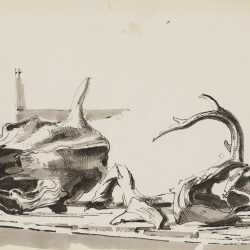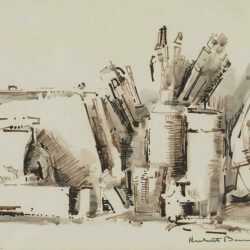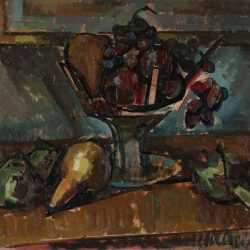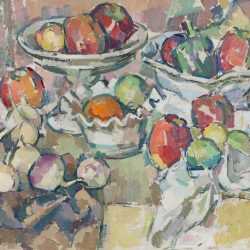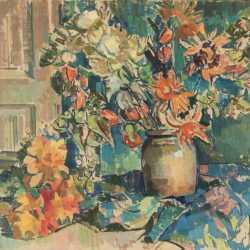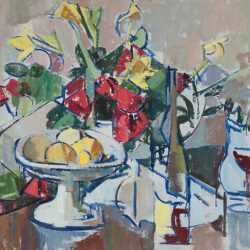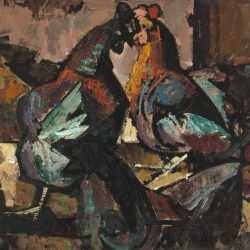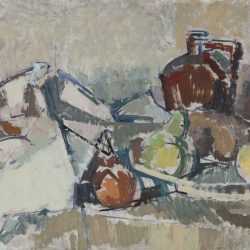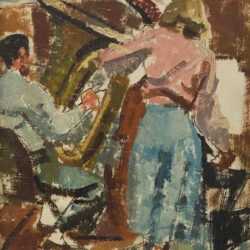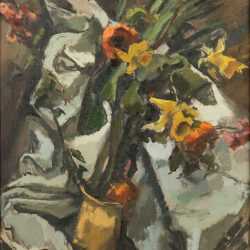Filter by Type
Filter by Category
Filter by Size
Filter by Year
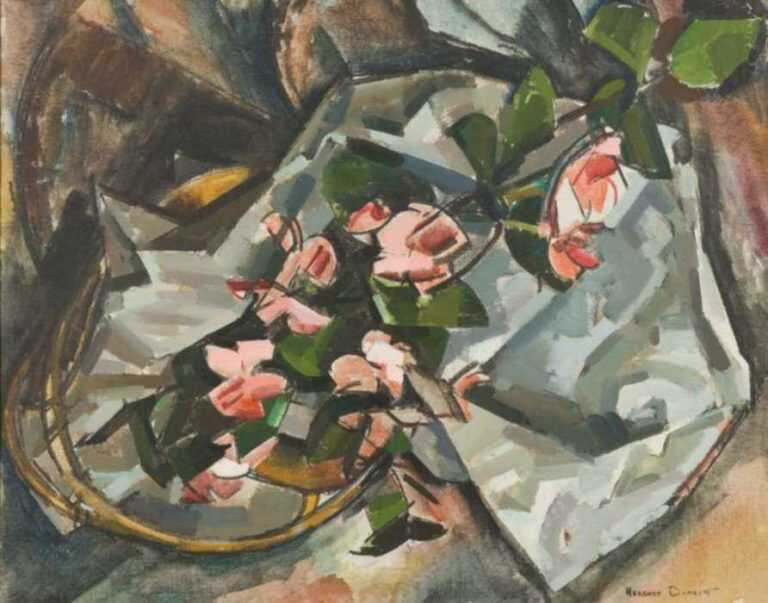
Herbert Barnett
American (1910-1972)
Herbert Barnett was an American artist whose life and work were closely tied to New England, and yet, his distinctive style of painting draws upon both the American tradition of representation and the artistic innovations of the Cubists. He is known as a painter of extraordinary ability and a virtuoso draftsman, whose works are included in numerous public and private collections across the country.
Born in Cranston, Rhode Island, Barnett grew up in Providence. While still in high school, he began to study painting at the Rhode Island School of Design. From 1927-31, he studied at the Boston Museum School and soon acquired a reputation for technical proficiency. At seventeen, he had his first one-man show at the Grace Horne Gallery in Boston and was already teaching private classes. After art school, Barnett spent three years traveling and studying in Europe. From the time of his return to the United States in 1934 until 1940, he divided his time between Cape Ann, Mass. and New York City.
As he assimilated what he had learned in Europe and absorbed the influence of the older generations of American painters, notably Marsden Hartley, Walt Kuhn and Edward Hopper, Barnett's style evolved rapidly. By 1939, his painting possessed characteristics that would remain relatively constant in his further development. He began each painting by quickly drawing with the brush to capture the basic contours of his subject. Next, he made a tonal underpainting in oil wash to indicate the most prominent volumes as areas of light and shadow. The painted surface consists of a pattern of discreet, rectangular brushstrokes. Barnett's emphasis on structure reflects his admiration for Cezanne and the Cubists.
In the late 1930s, Barnett's bold and expressive figure paintings and Cape Ann landscapes brought him recognition. His exhibitions at Boston and New York galleries won his critical acclaim. By 1940, several museums had already acquired his canvases and given him one-man shows.
In 1940, he became the head of the Worcester Museum School and began summering in Vermont, where he produced a distinctive group of landscapes of quarries, farms, bridges and mills. In 1951, Barnett became dean of the Art Academy of Cincinnati, the school of the Cincinnati Art Museum, and was soon honored with a retrospective exhibition at the museum. From the 1950s, Herbert Barnett's work continued to evolve toward a more refined statement of his personal vision. Until his death in 1972, he remained at the Art Academy of Cincinnati, returning to central Massachusetts each summer to paint.
A major memorial exhibition took place at the Cincinnati Art Museum in the winter of 1972-73. Subsequently, exhibitions have been held at the Fitchburg Art Museum, the New Britain Museum of American Art, the Robert Hull Fleming Museum of the University of Vermont, and the Worcester Art Museum. Although, the artist sold approximately 700 paintings and drawings during his lifetime, the estate is fortunate to contain many of the finest examples of his work. Childs Gallery has represented Barnett exclusively since 1978.
Barnett's work is represented in many public and private collections including the National Collection of Fine Arts, Washington, DC; the Worcester Art Museum, Mass.; the Cincinnati Art Museum, Ohio; Pennsylvania Academy of Fine Arts, Philadelphia; Art Institute of Chicago; Mead Art Center, Amherst College, Mass.; University of Arizona Museum of Art, Tuscon; Maier Museum, Randolph Macon College, Lynchburg, Va.; Art Academy of Cincinnati, Ohio; New Britain Museum of American Art, Ct.; and the Robert Hull Fleming Museum, University of Vermont.


